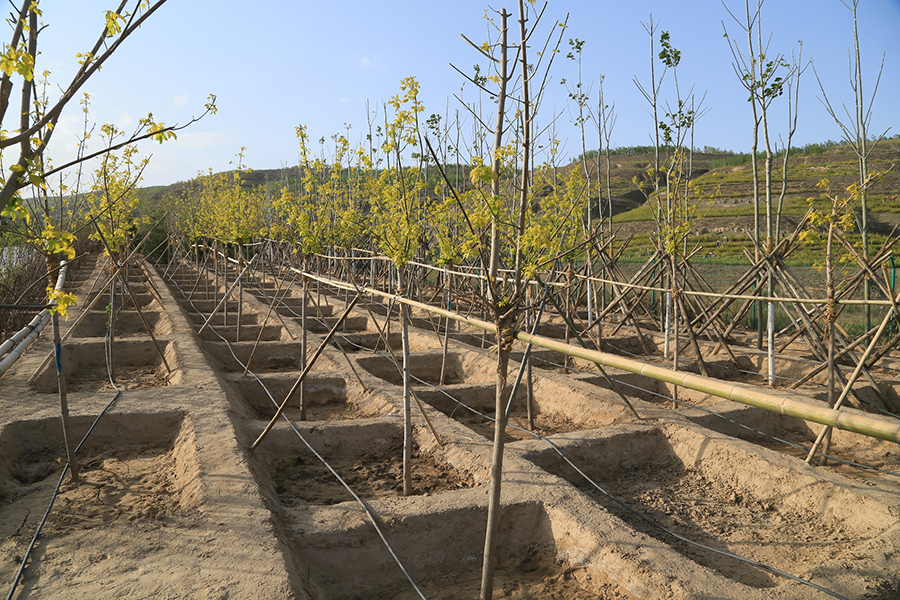From desert to forest: The green transformation of Xining
- By Cui Can
 0 Comment(s)
0 Comment(s) Print
Print E-mail China.org.cn, August 9, 2018
E-mail China.org.cn, August 9, 2018

To tackle the problem, Wei dug square holes about 20 centimeters deep, filled them with fertile soil, planted a sapling in each hole and used drip irrigation. "The soil was so precious that we put it in our cupped hands and poured it carefully into the hole, not wanting to waste even a pinch."
Wei said that no one believed this would work at first, but he eventually proved them wrong. "I always told my colleagues to treat these trees as their children. You must carefully treat them, and then they can grow fast and well into a forest."
Once the trees are planted, another challenge was protecting them against the harsh conditions at high altitudes on the Qinghai-Tibetan Plateau. Wang said the Xining Forestry Administration developed many new techniques to keep the trees alive and improve the ecosystem around the city. "To plant a tree in the mountain requires skill, and to preserve it for a long term is art."
Xining invited experts to study the local climate and soil conditions, and according to the findings introduced around 20 suitable plant varieties, all of which are resistant to wind, drought and cold. To improve the irrigation system, the city built 62 pump stations and 570 reservoirs for drip irrigation, with pipelines spanning 2,000 kilometers around the mountains.
In addition, Xining made it a priority to manage water resources and combat water pollution. It appointed 953 water chiefs at various levels to monitor the nearby Huangshui River and the surrounding areas. Its 11 urban sewage plants had a combined daily capacity of 375,000 tons, treating 91.5 percent of urban sewage in 2017, according to data from the Xining Water Authority.






Go to Forum >>0 Comment(s)